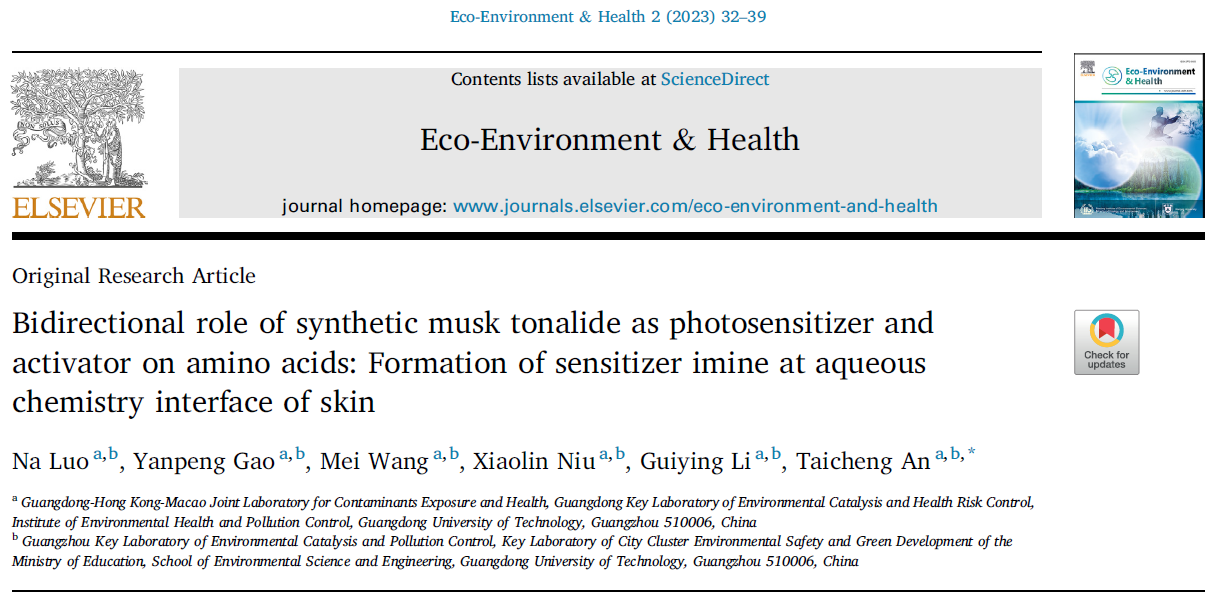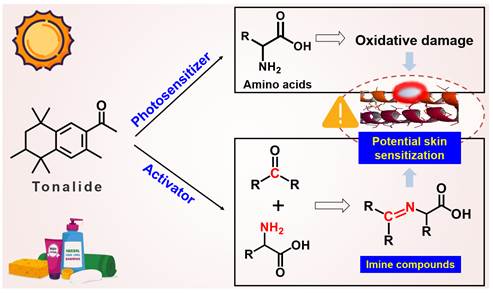<Bidirectional role of synthetic musk tonalide as photosensitizer and activator on amino acids: Formation of sensitizer imine at aqueous chemistry interface of skin>

Website:https://doi.org/10.1016/j.eehl.2023.03.002
Graphical Abstract:

Abstract:
Personal care products (PCPs) inevitably come into contact with the skin in people’s daily life, potentially causing adverse effects on human health. Especially the adverse effects would be exacerbated under UV irradiation but it is rarely attempted. In this study, to clearly understand the damage of representative PCPs to human skin, the photochemical transformation behaviors of representative PCPs, fragrance tonalide (AHTN), were measured in the presence of amino acids as a basic building block of human tissue. The results showed that amino acids could decelerate the photochemical transformation rate of AHTN, increasing the likelihood of AHNT persisting on the skin surface and the health risk to the human being. Further, the interaction between amino acids and AHTN was investigated. AHTN could play bidirectional roles in damaging amino acids: the photosensitizer and reactive activator. As a photosensitizer, the 1O2 generated from the AHTN photosensitization was partly employed to oxidative damage amino acids. Furthermore, as an activator, combined experiments with quantum chemical computation, the carbonyl group of AHTN was found to be the active site to activate the N-containing group of amino acids. The activation mechanism was the electron transfer between AHTN and amino acids. Imines formed during photochemical transformation of AHTN with histidine/glycine were as the molecular initiating event as potential skin sensitization. This study reported for the first time that skin photosensitizer formation threatened human health during the photochemical transformation of AHTN.